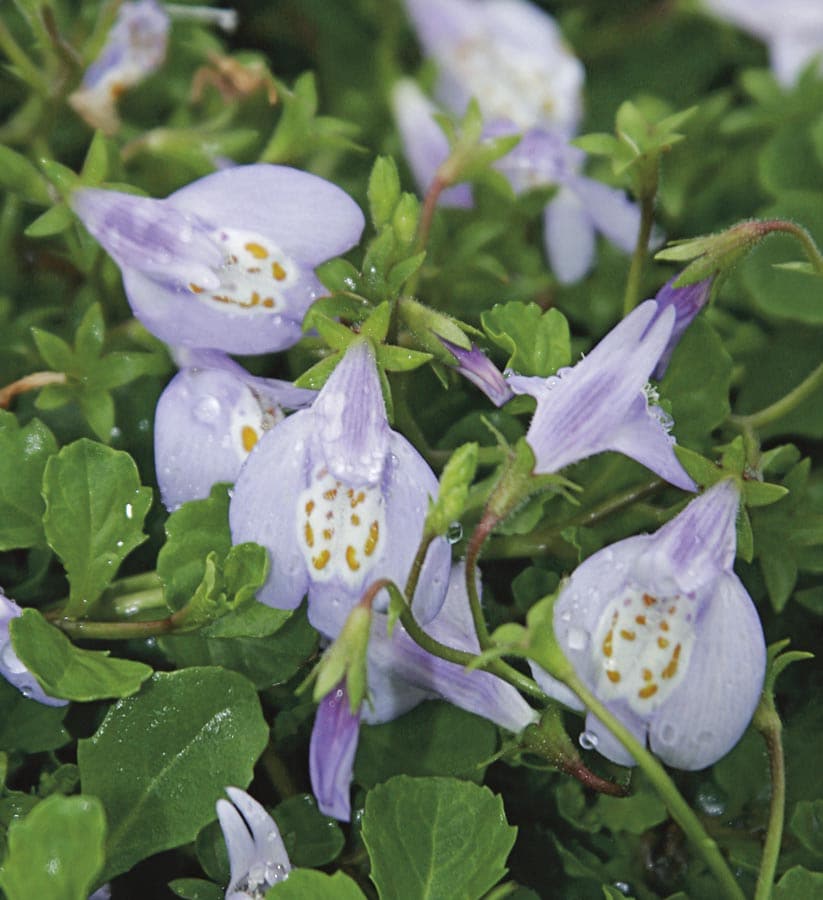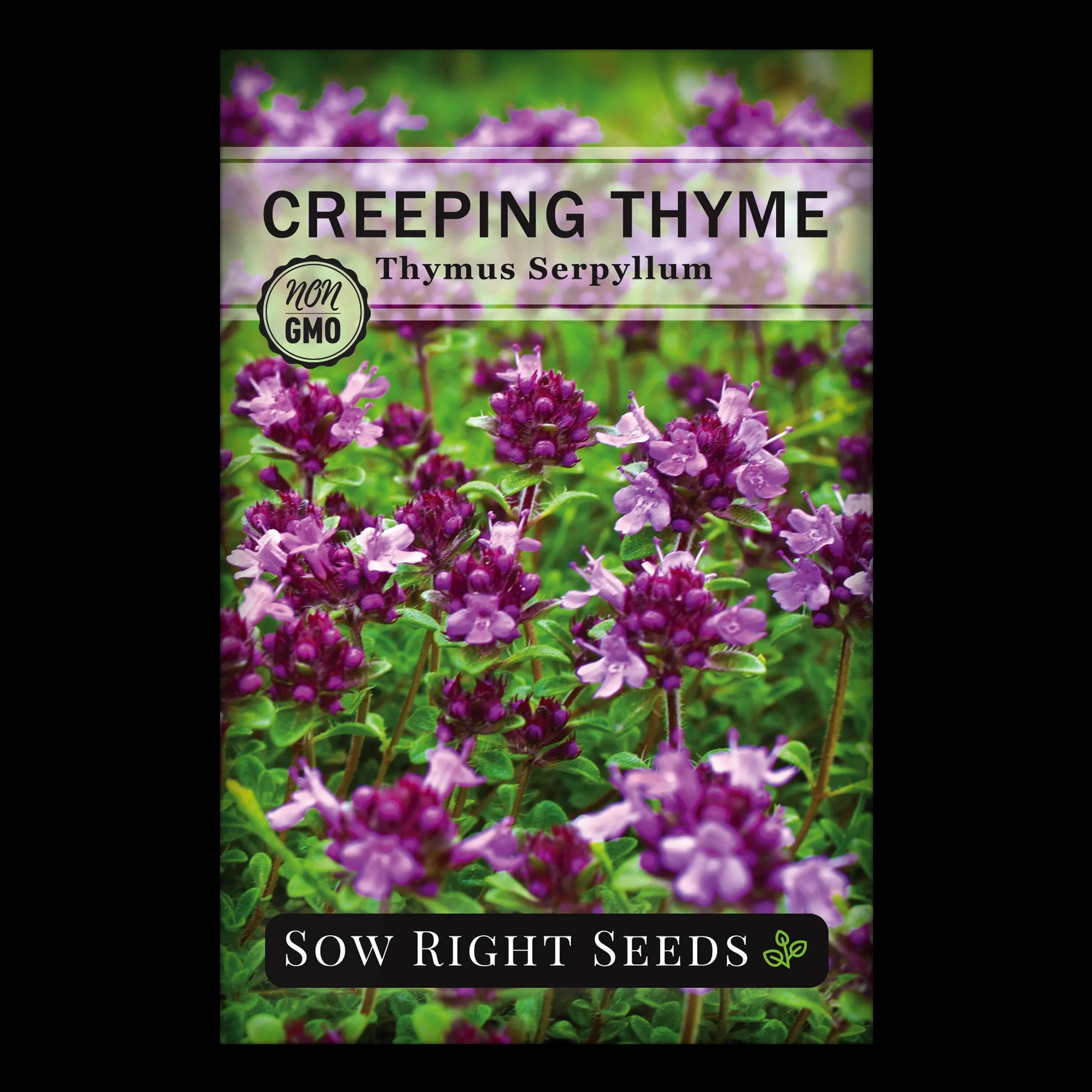Walkable groundcover plants are a big landscaping trend – these 6 low-growing varieties are ideal for pathways
For paths that are pretty as well as practical, these walkable groundcover plants are the ones to plants alongside your paving

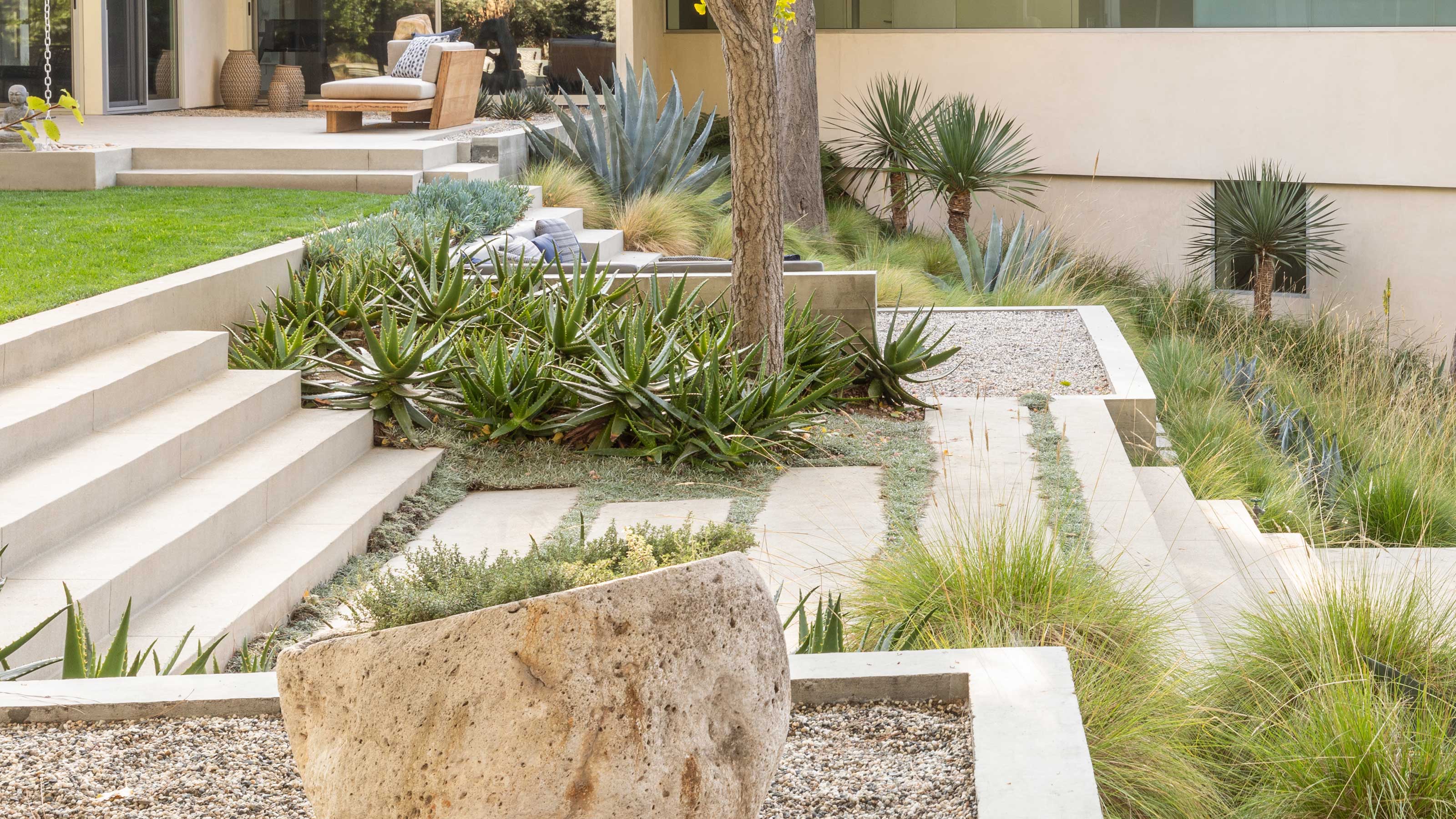
A backyard path doesn't have to be merely practical, it can be pretty too. Solid brick or paving has its time and place, but it lacks a certain je nais se quois as a landscaping idea. Instead, many of us decide to lay our paving or flagstones at stride-length intervals atop our lawns for a more natural look. The problem is, the grass in between has a tendency to wear away, giving way to unsightly patches of bare dirt. If that sounds familiar, you might want to consider an alternative ground cover instead.
Walkable ground cover plants are one of the best ways to fill the gaps between your stones that also promise a more whimsical garden path idea. These dense, mat-forming plants are low-growing making them tough enough to tolerate light foot traffic.
They also have the added benefit of preventing weeds growth within your lawn, too. Whether you want bushy green foliage, pretty colorful flowers, or even fragrant herbs, there are plenty of options out there that offer a better alternative to grass for your backyard path. Here are six options that experts recommend.
1. Sedum

Sedum, also know as stonecrop, makes excellent groundcover for a pretty path. This small, low-growing succulent spreads across the ground and comes in various different colors.
'Sedum's small, star-shaped flowers add a hint of color to any garden,' explains Rhys Charles, lawn expert and founder of Lawnmowers and Tractors. 'It prefers full sun and should be cut back in early spring to promote new growth.'
It's also a favorite of Jane Stark's, creative director Stark Design, who finds it works as a beautiful landscaping idea on paths within shingled areas as well as lawns. As she explains: 'Appropriate ground cover should be chosen based on the microclimate, the extent of foot traffic, paving choice, other landscaping and building materials as well as the architecture of the building.'
2. Creeping Mazus
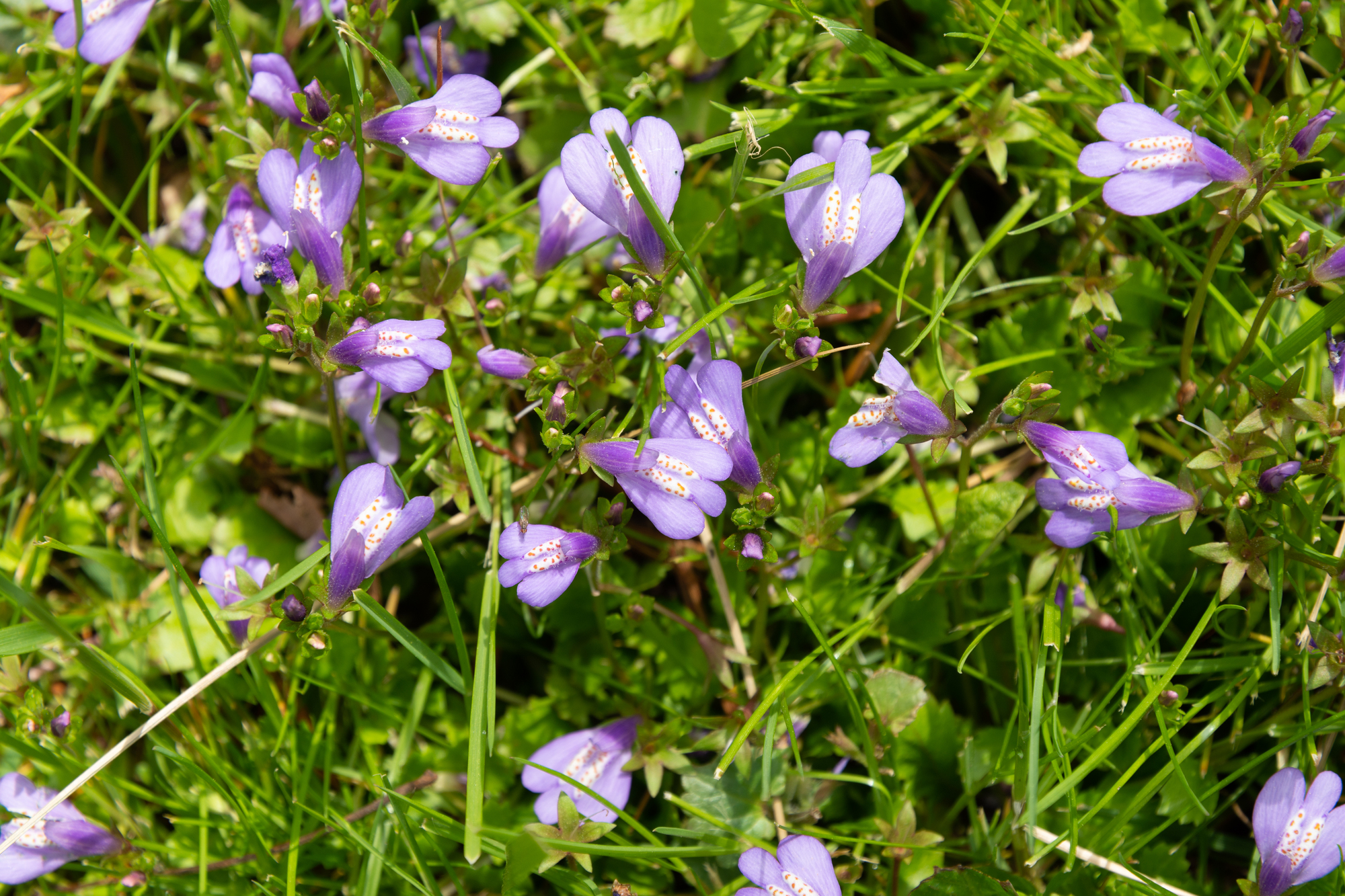
For a walkway that's peppered with pretty purple flowers, try creeping mazus for your garden path idea. This semi-evergreen perennial flowers through late spring and summer offering a carpet of delicate flowers and makes a suitable ground cover in hardiness zones 5 to 8.
The Livingetc newsletters are your inside source for what’s shaping interiors now - and what’s next. Discover trend forecasts, smart style ideas, and curated shopping inspiration that brings design to life. Subscribe today and stay ahead of the curve.
'I love using Mazus reptans for walkable ground cover,' says Ryan Farley, plant expert and CEO of Lawn Starter. 'Its dense evergreen green foliage can withstand light foot traffic with ease, and its colorful flowers add a pop of color to the garden. It's also great for creating a natural-looking cottage-style garden or adding texture and interest to more formal garden designs.'
3. Creeping Thyme
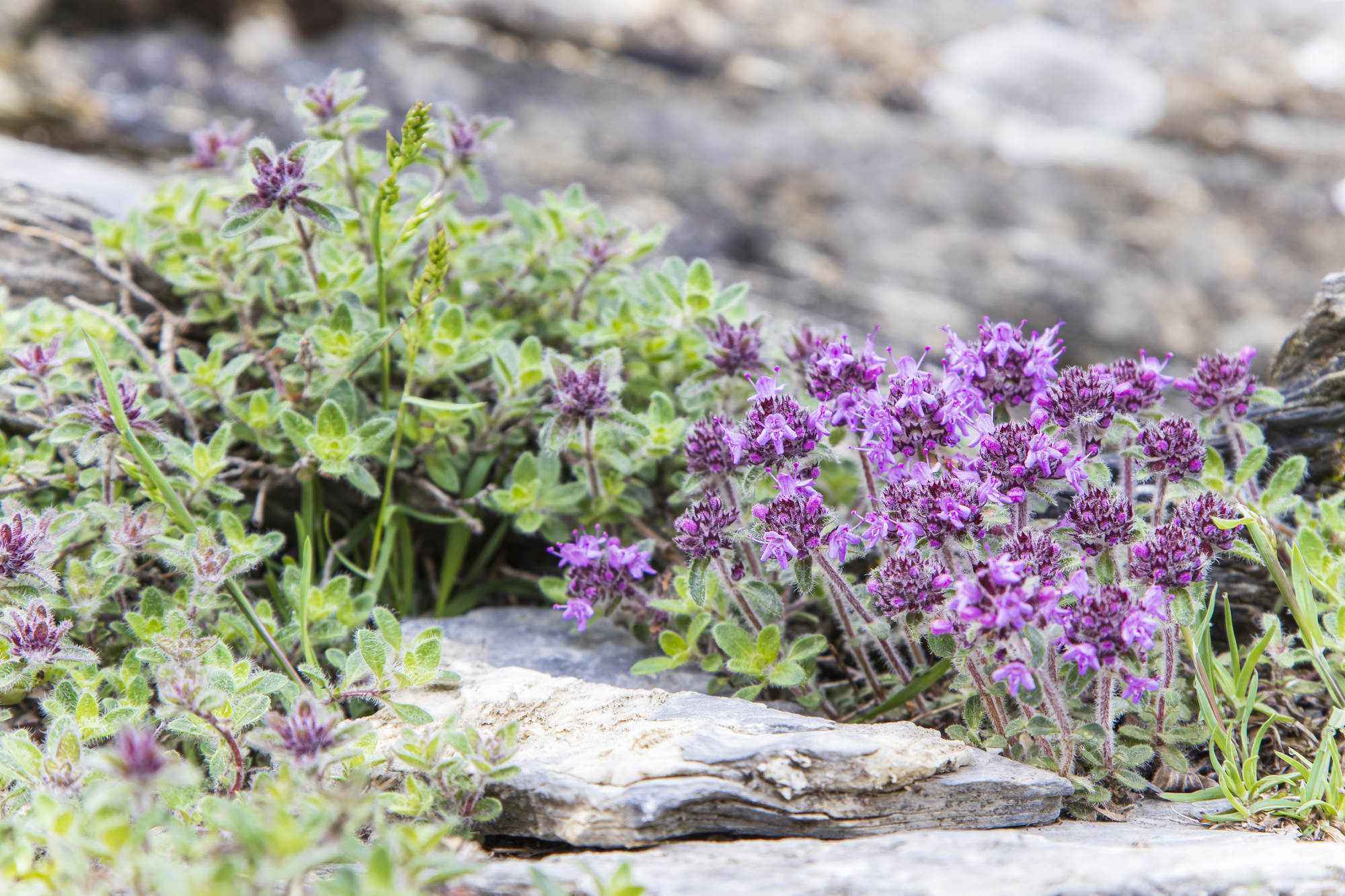
For a ground cover plant that releases a delightful fragrance every time you walk by, give creeping thyme a try. 'This fragrant perennial herb is a great choice for a walkable ground cover,' says Rhys. 'Its low-growing habit makes it an ideal way to create a low-maintenance, yet attractive path, and it can tolerate a range of conditions including sun and shade.'
This modern garden idea brings the best of herbs and pretty florals to your pathway. The woody, aromatic sprigs not only make your backyard smell divine, but most species can be used in your cooking too. In fact, occasional trimming for use in the kitchen is the best way to keep the plant in check. 'If it becomes too unruly, it can be cut back almost to the ground in early spring,' adds Rhys.
4. Dichondra
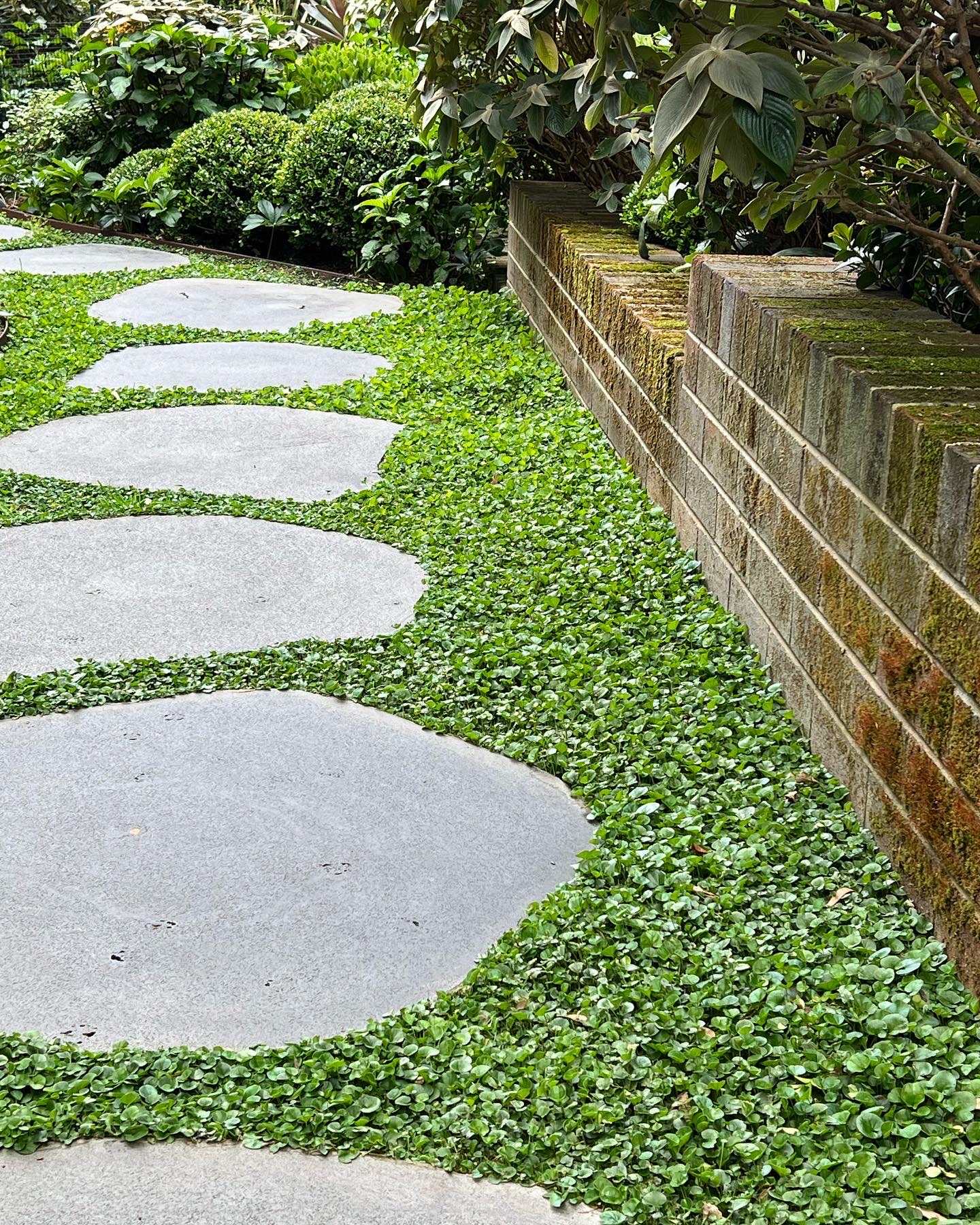
Dichondra is a herbaceous, broadleaf perennial that produces a dense mat of green or silver foliage as well as dainty white flowers. 'Its stems typically grow two to three inches in height and it covers areas much more quickly than typical grass varieties,' says Matthew Koch Ph.D., Product Development Lead of the Seed and Biotech Teams at Scotts Miracle-Gro. 'It’s lower maintenance and great for gardens in areas that don’t receive really heavy foot traffic.'
While it's a low maintenance garden idea, Dichondra does thrive best when it has access to partial to full sunlight. 'Both varieties need warm weather, so it’s best not to plant it until after frost passes,' adds Matthew. 'After planting, water thoroughly to promote strong growth and plant health. Though it does prefer moist soil, overwatering will likely damage the plant.' For colder environments that experience frequent freezing temperatures, Matthew suggests a layer of mulch or a frost blanket.
5. Irish Moss
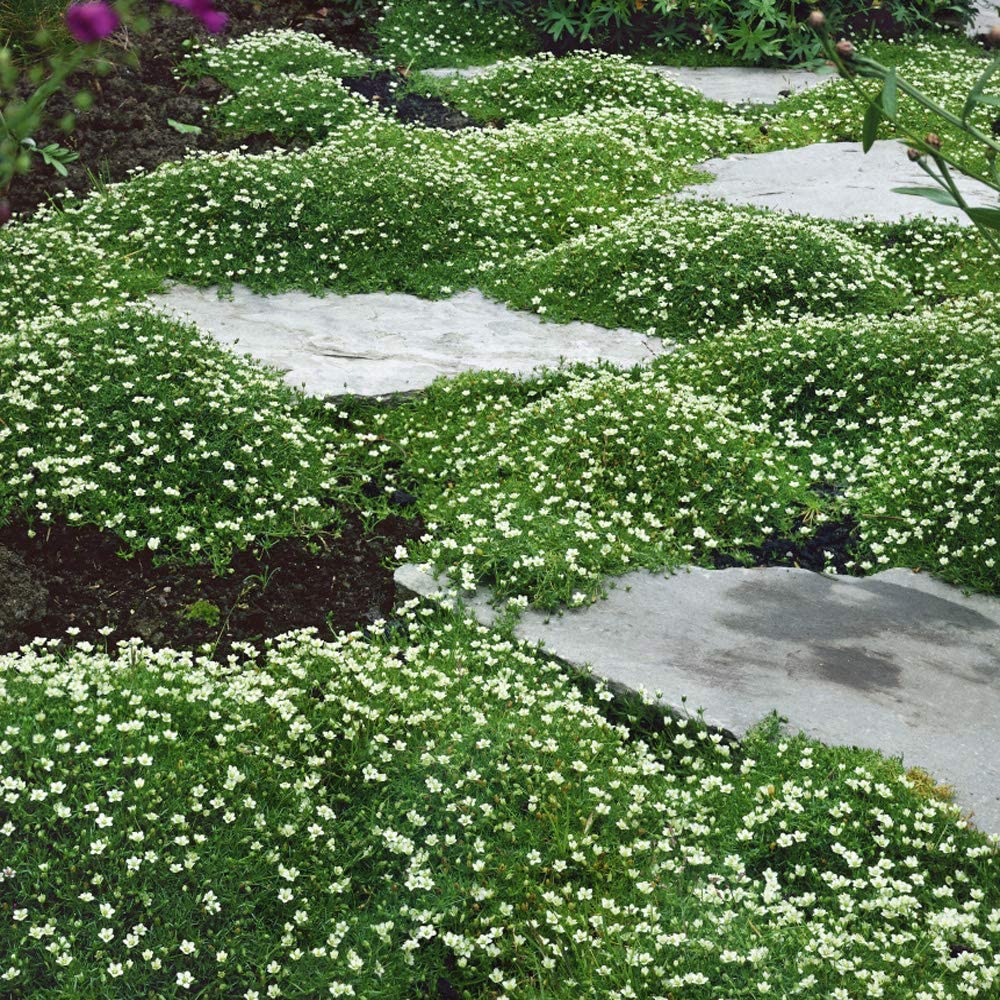
'Another great option for a walkable path, Irish Moss forms a lush carpet of green that can handle light foot traffic,' says Sara Lundberg, owner of seed company Bloom & Haul. 'Its tiny, star-shaped flowers add a pop of white to the greenery, making for a stunning contrast.'
The fast-growing evergreen perennial will soon form a dense carpet of foliage between your paving which results in a soft cushioned effect. 'Irish moss grows best in full sun with regular water and drainage,' notes Matthew. 'It will only need to be watered to keep evenly moist but not enough water to be completely wet and although it will grow in partial shade, the plant won't be as compact.'
6. Ground Clover

Clover lawns have proved a popular alternative to standard grass in recent years thanks to their low-maintenance, cost-effective, and eco-friendly benefits since they provide very little watering. The same can be said for ground clover, also known as mini clover, which grows closer to the ground for denser foliage.
According to Matthew, clover's delicate flowers help attract pollinators which in turn promotes a healthier garden overall. 'It also acts as a natural fertilizer for soil, by absorbing nitrogen from the atmosphere and transforming it into nitrogen usable by other plants,' he says. 'Clover also tends to eliminate weeds, and reduces erosion by establishing deep roots that aerate compacted soil and prevent rainwater run-off.'

Lilith Hudson is a freelance writer and regular contributor to Livingetc. She holds an MA in Magazine Journalism from City, University of London, and has written for various titles including Homes & Gardens, House Beautiful, Advnture, the Saturday Times Magazine, Evening Standard, DJ Mag, Metro, and The Simple Things Magazine.
Prior to going freelance, Lilith was the News and Trends Editor at Livingetc. It was a role that helped her develop a keen eye for spotting all the latest micro-trends, interior hacks, and viral decor must-haves you need in your home. With a constant ear to the ground on the design scene, she's ahead of the curve when it comes to the latest color that's sweeping interiors or the hot new style to decorate our homes.

